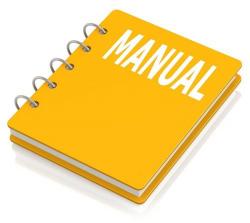Komatsu WB70 Backhoe Loader Workshop Repair & Service Manual
Catalog:
Model:
Complete digital official shop manual contains service, maintenance, and troubleshooting information for the Komatsu WB70A-1 Backhoe Loader. Diagnostic and repair procedures are covered in great detail to repair, maintain, rebuild, refurbish or restore your vehicle like a professional mechanic in local service/repair workshop. This cost-effective quality manual is 100% complete and intact as should be without any missing pages. It is the same factory shop manual used by dealers that guaranteed to be fully functional to save your precious time.
This manual for Komatsu WB70A-1 Backhoe Loader is divided into different sections. Each section covers a specific component or system and, in addition to the standard service procedures, includes disassembling, inspecting, and assembling instructions. A table of contents is placed at the beginning of each section. Pages are easily found by category, and each page is expandable for great detail. It is in the cross-platform PDF document format so that it works like a charm on all kinds of devices. You do not need to be skilled with a computer to use the manual.
EXCERPT:
Shop Manual (WEBM003200)
HYDROSTATIC TRANSMISSION
TRANSMISSION COMPONENTS
Machine travel is obtained via a closed circuit hydrostatic transmission including:
1- Reversible and variable displacement axial piston hydraulic pump direct-coupled on diesel engine.
2 -Variable displacement axial piston hydraulic motor direct-coupled on transmission. They are connected by hoses (A - B).
On "closed circuit" system have been installed also following devices:
On hydraulic pump
a - Electro-distributor (5) to select hydraulic motor rotation direction.
b - Pressure cut-off valve (6).
c - By-pass valve (7).
d - Control valve (8).
e - Inching valve (9).
f - Main relief valve (4).
On hydraulic motor
g - Automatic displacement control device according to working pressure (1 0).
h - Additional piloting (11 ).
i - Recognition device for travel direction (12).
I - Oil exchange valve (13).
HYDROSTATIC TRANSMISSION OPERATION
• Pump shaft (1), (which drags cylinder barrel) is rotates by the engine.
• Moving the positioning piston (2) the swash plate is shifted from neutral position; an angle is fixed between pistons and swash plate (on which pistons are constrained); this angle will create a volume difference in one side smaller and in the other side bigger. In this way it is created an oil pressure delivery area (hydraulic power) through hydraulic motor (pipe A on diagram) and a suction area from hydraulic motor (pipe Bon diagram).
• The oil sent from pump to motor (pipe A), pressing on pistons, will move pistons and consequently the output shaft (14), transforming "hydraulic power" into "mechanical power".
• The oil transferring power is returned through pipe (B) to hydraulic pump's suction port to be reused.
• This is the "closed circuit" principle which, theoretically, utilises once again the same oil quantity.
NOTE - Moving the positioning piston in the other direction, it will create the reversal direction of engine rotation.
• Oil leakages between moving parts, cause, during machine's life, the emptying of closed circuit; this trouble is solved applying a gear pump (3) named boosting pump, which sucks oil from the hydraulic tank and introducing it into the closed circuit keeping inside constant pressure, checked by a fixed setting main relief valve (4).
• Part of pressurized oil of the boosting circuit is used for positioning piston (2) operation which allows the stepless variable inclination of the swash plate and therefore the hydraulic motor speed.
• All the system is protected from pressure peaks (and therefore from overloads) by safety valves (7).
...





